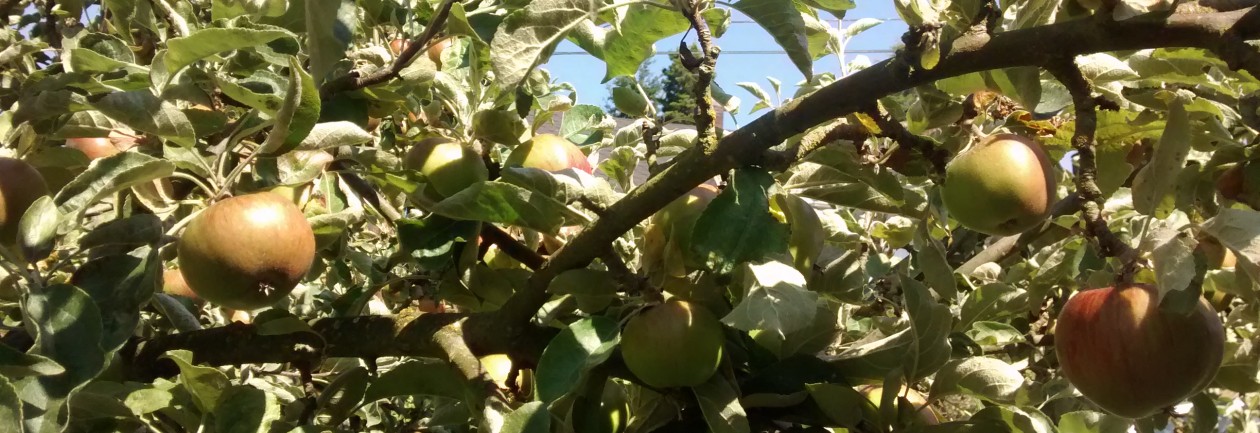In his d’var Torah for Parashat Nitzavim-VaYelekh, Rabbi Shai Held gets to the heart of a concept that unites Sukkot and Shmita – vulnerability. During Sukkot, we dwell in fragile huts in which we are conscious of every breath of wind, of every drop of rain, of the warmth of the sun filtered by the shade of vegetation. Even starlight, which connects us far beyond the world of our daily experience and out into the vast universe, is intended to be part of the experience of dwelling in a sukkah. The fragility of the sukkah is an aspect of its very permeability and connection to the world outside of itself. The entire community is enjoined to share this experience of dwelling in a fragile structure, a partially open structure, and we are called upon to offer our friendship, our hospitality, our gifts, to friends. From our place of vulnerability we build community, offering, and accepting, gifts of food and friendship.
In the end, Sukkot causes us to feel within our bones that our protection, in the end, is not in being cut off, from nature, from risk, from one another, but precisely in our immersion within the wholeness of the world – of nature, of the universe, and most importantly, of the wholeness that comes from being in relationship with one another.
The Shmita year likewise opens us up to experience vulnerability and connection. But unlike Sukkot, which lasts a single week, Shmita lasts an entire year; and whereas Sukkot provides, for most of us, only a simulation of vulnerability, the Shmita year asks for much more. Literally, the Shmita year asks us to release our tight hold, and to accept God’s gifts as gifts. We are required to deeply take in our reliance on natural processes that are outside of our control. We are asked to release our sense of ownership of productive, food producing land and to see it as, in the end, a gift from God, intended to nourish all life. We are asked to shift our focus from accumulation, to use, and then to sharing. We are asked to release our economic control over one another, or subservience to one another, that comes about as a result of indebtedness. We are asked to trust that there will be enough for all, and to make it so.
This heightened vulnerability would, of necessity, lead to a heightened experience of connectedness, with the productive landscape, with the processes that govern its bringing forth food, and with our companions, human and non-human, who share the land with us.
It is striking how often we hear about disaster bringing a community together. Think of the Oso landslide in our area – or Hurricaine Katrina. Out of a tragedy that blindly strikes a community, each person is brought to the raw experience best captured in that old expression, which I intensely dislike but find irreplaceable sometimes, “there but for the grace of God go I.” From the authenticity of that realization emerges the response: the ones who run in with aid, with comfort, with food, with a blanket, a room for a stranger, the tools and the skills to rebuild. From the depth of awful circumstance arises a community with a renewed sense of a purpose beyond their individual selves, and faith founded in direct experience in the goodness, the dependability, of fellow human beings. It seems to me that these holidays, Sukkot and Shmita, ask us to build these conditions, to respond, and to form this awareness, through the regular, voluntary acceptance and experience of vulnerability.
This very repetition is surely intended to develop and strengthen our response, our willingness to stand in a gift relationship with one another and the wider world. In much of our daily life, we are asked to put our faith in the “market economy,” which enables (some of) us to purchase what we need free of any encumbrance by entangling relationships. However as Michael Sandel sets out to prove in his book, What Money Can’t Buy, “Altruism, generosity, solidarity, and civic spirit are not like commodities that are depleted with use. They are more like muscles that develop and grow stronger with exercise.” Our tradition requires that we stand in a particular relationship to one another, and, I would assert, to the Earth. Sukkot and Shmita in particular provide us with regular opportunities to bring our conscious awareness to those relationships.
Rabbi Held concludes his d’var with the observation that “genuine community requires compassion, and compassion, in turn, depends on admitting our own vulnerability. … Community becomes possible … when we realize and accept that we are all susceptible to being hurt and are, crucially for the Torah, all equally dependent on God.”
This, then, is what Sukkot and Shmita have in common – the intention of building a world up from an authentic experience of vulnerability, community, and our shared dependence on God.
